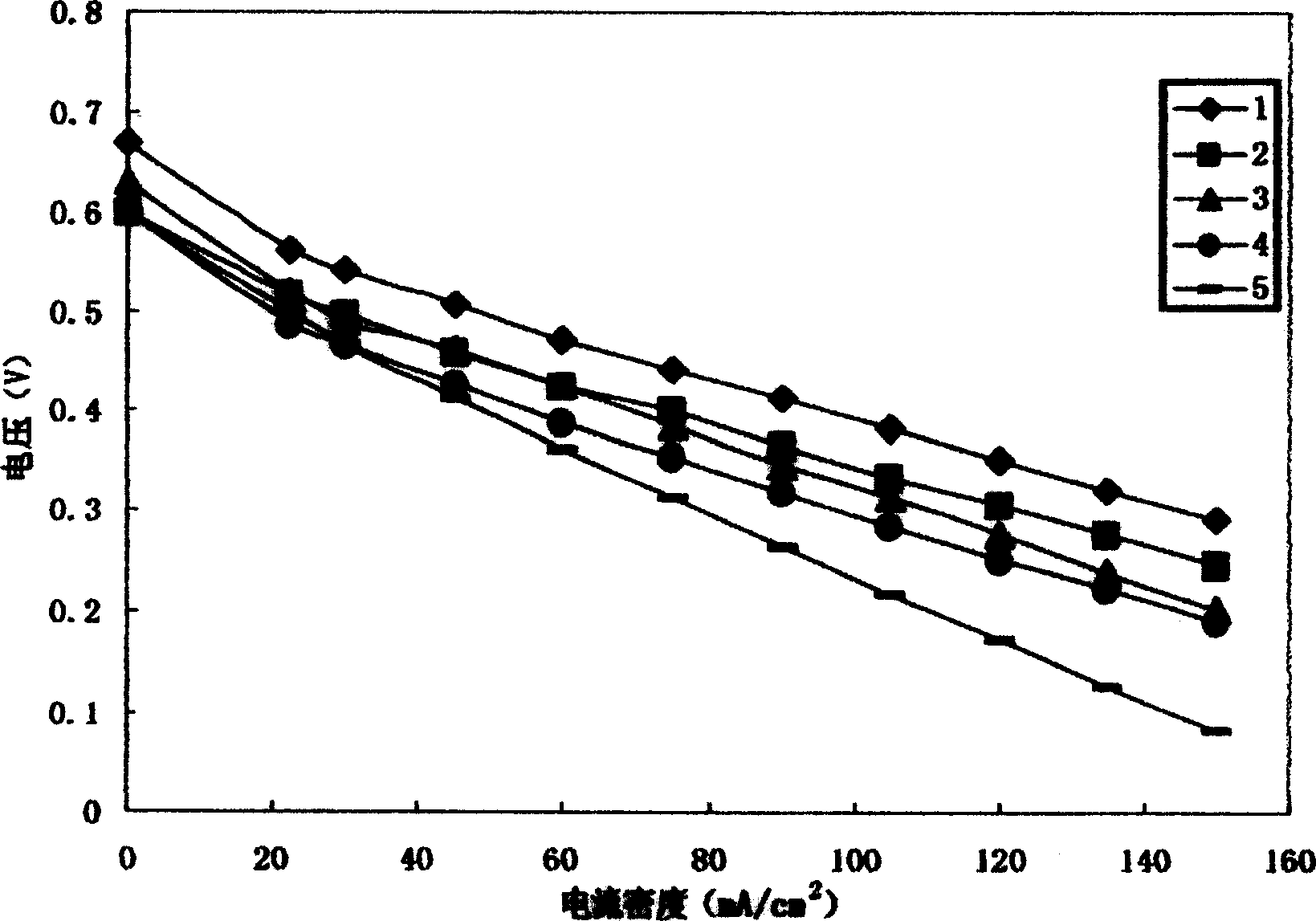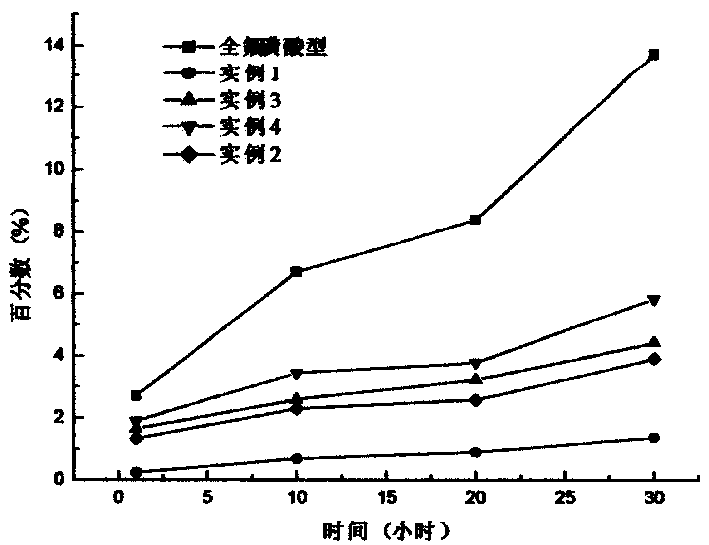Preparation method of anti methanol permeation proton exchange film
A proton exchange membrane, methanol-resistant technology, applied in electrical components, battery electrodes, circuits, etc., can solve problems such as hindering the cathode electrochemical reaction, affecting the development and application of direct methanol fuel cells, and achieving good chemical stability and proton conduction. The effect of improving the resistance to methanol penetration and electrochemical stability, and improving the specific power
- Summary
- Abstract
- Description
- Claims
- Application Information
AI Technical Summary
Problems solved by technology
Method used
Image
Examples
example 1
[0022] ①Dissolve 1 part of polybenzimidazole containing sulfonic acid side groups in 10 parts of organic solvent dimethylformamide to form a uniform mixture;
[0023] ② Add 8 parts of silicon dioxide to the mixture to form a suspension;
[0024] ③ Mix the suspension with 180Mpa ultra-high pressure;
[0025] ④Introduce ultrasonic waves, apply ultrasonic vibration force to suspended matter, and carry out nano-crushing of suspended matter and whole-chain treatment of aromatic heterocyclic polymers;
[0026] ⑤ After casting the slurry formed above to form a film at room temperature, solidify at room temperature for 2 hours, then solidify at 100°C in an inert atmosphere for 4 hours, cool to room temperature, and remove the membrane in water to obtain a methanol permeation-resistant proton exchange membrane.
example 2
[0028] ① Dissolving 1 part of polyphenylquinoxaline containing sulfonic acid side groups in 12 parts of organic solvent dimethylacetamide to form a uniform mixture;
[0029] ② Add 6 parts of titanium dioxide to the mixture to form a suspension;
[0030] ③ Mix the suspension with 120Mpa ultra-high pressure;
[0031] ④Introduce ultrasonic waves, apply ultrasonic vibration force to suspended matter, and carry out nano-crushing of suspended matter and whole-chain treatment of aromatic heterocyclic polymers;
[0032] ⑤ After casting the slurry formed above to form a film at room temperature, solidify at room temperature for 3 hours, then solidify at 140°C for 4 hours in an inert atmosphere, cool to room temperature, and remove the membrane in water to obtain a methanol permeation-resistant proton exchange membrane.
example 3
[0034] ① 1 part of polypyrrolone containing sulfonic acid side groups is dissolved in 14 parts of organic solvent dimethyl sulfoxide to form a homogeneous mixture;
[0035] ② Add 10 parts of silicon dioxide to the mixture to form a suspension;
[0036] ③ Mix the suspension with 160Mpa ultra-high pressure;
[0037] ④Introduce ultrasonic waves, apply ultrasonic vibration force to suspended matter, and carry out nano-crushing of suspended matter and whole-chain treatment of aromatic heterocyclic polymers;
[0038] ⑤ After casting the slurry formed above to form a film at room temperature, solidify at room temperature for 4 hours, then solidify at 170°C in an inert atmosphere for 4 hours, cool to room temperature, and remove the film in water to obtain a methanol permeation-resistant proton exchange membrane.
PUM
 Login to View More
Login to View More Abstract
Description
Claims
Application Information
 Login to View More
Login to View More - R&D
- Intellectual Property
- Life Sciences
- Materials
- Tech Scout
- Unparalleled Data Quality
- Higher Quality Content
- 60% Fewer Hallucinations
Browse by: Latest US Patents, China's latest patents, Technical Efficacy Thesaurus, Application Domain, Technology Topic, Popular Technical Reports.
© 2025 PatSnap. All rights reserved.Legal|Privacy policy|Modern Slavery Act Transparency Statement|Sitemap|About US| Contact US: help@patsnap.com



